In this article we are going to explain the best ways to clean the different types of coffee machines. There are quite a few different types of coffee makers on the market so we shall try and cover off each type.
To make that easier, we have included below a table of contents, where you can find information on the actual type of machine that you own. Hopefully that will speed things up for you.
Please note this is a long article, so you can skip to the right section to find the right information you need on cleaning your coffee maker.
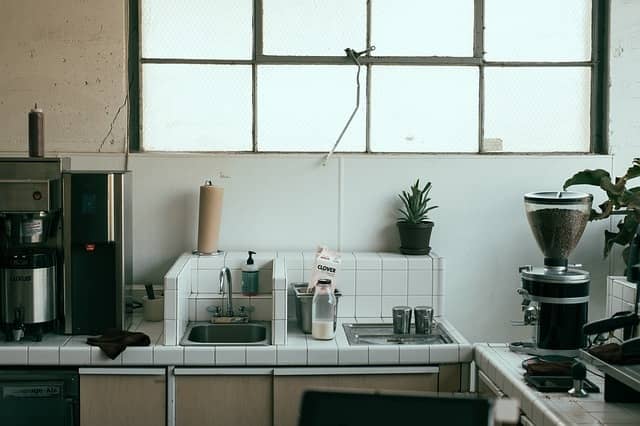
General Coffee Machine Cleaning Tips
When we were researching the information online, we came across some crazy suggestions, so hopefully we can get rid of some of those daft ideas. We also came across some really bad advice.
We will also make you aware of this bad advice, and certainly advise you to ignore that type of information.
- The best general tip that we can offer is to regularly clean your machine rather than putting it off to some other time.
- Generally speaking these are quite easy to clean in terms of a simple wipe of the outside of the machine with a damp cloth - don't forget amy steam wands
- That alone will keep them looking well and remove any stains or dust.
- It is also important to regularly empty the drip tray and rinse those out. Simple fast tasks like these can keep your machine looking really well. It will also keep your coffee machine hygienic and safe to use
- Never leave water in a coffee machine and then use it when making your next coffee. Sediment builds up in water, and it is always better to throw that water out, and use fresh water.
Why Bother Cleaning a Coffee Machine?
Initially this sounds like a really stupid question. However the reason we include this is that we came across a lot of online information, advising users not to clean their machines.
The single reason given for that was that if you left the coffee grounds etc in the machine, pot, glass jug etc, then it helped create a much better flavour. Now we already mentioned bad advice, and this is certainly that.
We can assure you that leaving old coffee in a percolator, coffee pot or a machine will do nothing for the flavour of your coffee. In fact the opposite is true.
So aside from the hygiene risks, coffee is ALWAYS best served fresh.
You may also have heard this rumour with reference to teapots. That is where tea is made in a pot and over time a brown scale builds up. Some people say that makes the tea taste better.
Like your coffee machine that is just simply not true. Tea is also best made with fresh tea leaves, and not warmed in a dirty teapot.
There are two main cleaning issues with most coffee machines. Those are:
- Water hardness which can cause limescale to build up in your machine and the parts of the machine or maker, such as the boiler, the group head and the pipes
- Coffee staining if the machine is not regularly cleaned.
In almost all of the more expensive and advanced machines, the descaling process is automated. They will have a program built into them that you can activate.
Some of those machines will also automatically descale based on an intelligent cleaning system.
That does of course make life that little bit easier. For most machines though a manual descaling process will be required, which we will explain later.
Cleaning the Pipes in a Coffee Machine
Now aside from the descaling process, there is also the cleaning of the various pipes in your coffee machine. As you can imagine there are a number of parts in your coffee machine that will from time to time need to be rinsed through.
Cleaning the boiler in your machine, and then extending this cleaning process through the pipes is a very important thing to do.
Descaling vs Cleaning
These two processes often get mixed up or confused. They can be, but are not usually the same thing.
What is Descaling?
Water from a tap will contain impurities. When water is heated then there is a chemical reaction between the impurities in the water, and any metal parts, like a boiler, the heating element or the metal pipes.
Over time that reaction creates lime, which can then stick to the metal parts. This is called limescale. This happens in hot water machines, coffee makers, kettles, steam irons etc. Basically any apparatus where there is hot water and metal.
This limescale then restricts the effectiveness of those parts.
- For example the boiler size gets reduced as sediment builds up in the bottom and sides of the boiler
- The heating element becomes less effective and will eventually stop working
- The pipes get narrower and will eventually block up
The harder the water is in the area where you live, the faster this process will take place. In the UK around 60% of the population live in hard water areas.
Descaling is the process used to prevent/remove the limescale from your apparatus. There are different methods for doing this, but most of them use descaling tablets to remove the limescale.
The Cleaning Process
The cleaning process of the machine refers to everything else except the descaling process. For example wiping down the exterior of the machine, cleaning the filters regularly, and cleaning any associate parts like the carafe, or the tampers etc.
Cleaning should be done on a very regular basis to keep your coffee maker in really good shape. The descaling process will not be done as often, but will still need to be done fairly regularly, around 2-4 times a year.
How to Clean a Coffee Machine Step by Step?
It is always a good idea to clean a coffee machine one step at a time. Over the years we have developed a method that holds good for almost every type of machine.
Step 1 - Empty the Drip Tray
On most coffee machines there will be a drip tray which is where the coffee can spill over into a tray when the brewing is happening. It is highly advisable to empty this every single time you use your machine.
Simply remove the tray, rinse it out, dry it and pop it back in. It really does not take a long time and helps prevent the coffee from staining the drip tray. If left for a few days a lot of bacteria can build up in these trays, and it can also get a little smelly.
This is a simple process to follow for a filter machine or any other type of coffee maker.
Step 2 - Rinse Through the Machine With No Coffee
In this step you simply flush water through the machine but without adding any coffee. The idea is simply to run the machine as if you were brewing a cup of coffee, but don't put any grains in the machine.
Essentially you are flushing through the system.
Now, if you live in a hard water area in the UK, then the internal pipes may start to get clogged. You can use anti-scale tablets along with water to flush the system, and these do a very good job at limescale prevention.
Some people prefer to use a 50/50 mix of water and white vinegar. That also works really well at cleaning the pipes.
It is however a bit more work as once you have put this mixture through the pipes, you will need to do a couple of water only runs to make sure the smell and taste of the vinegar have been removed.
Some users have reported that the vinegar smell lingers too long, and it is always better to use a bought commercial descaling tablet to do the job.
If you do this once every 3 months, then you will go a long way to increasing the lifetime of your machine, as the limescale is not allowed to build up.
Step 3 - Clean the Entire Machine
Regularly wiping down the machine is a very good idea. You are essentially keeping the dust off the machine, and removing any stains. We would also highly recommend moving the machine to one side and wiping under it as coffee grains can quite literally get everywhere.
All that is required is a quick wipe down with a cloth, and in most cases a damp cloth will do the job. We would advise not using any type of harsh cleaning agent on the exterior of a machine.
Step 4 - Clean Accessories
It will depend on your individual coffee brewing type and set up. If you use a grinder then you will need to follow the manufacturer's instructions to clean that properly.
You may also have a coffee tamper and mat. Most of those can be washed in the dishwasher or hand rinsed under a tap.
Likewise the group head in most coffee machines can also be put in a dishwasher or again rinsed out under a tap.
How to Clean a Filter Coffee Machine
Filter coffee machines have the main machine which contains a boiler and pipes through which the coffee will flow. Those need to be descaled the same as any other coffee machine. We have explained that process above.
In addition to that, there will be a carafe and also filters.
Cleaning Filters
Sometimes the filter will be paper, plastic mesh or metal filters. Paper filters can be disposed off once they have been used. The plastic mesh or metal filter should ideally be rinsed through after every brew.
That will keep the filter clean, hygienic and most important free from any type of coffee grain blockage.
Cleaning the Carafe/Glass Jug
These can actually be a real pain to keep clean. Most carafes are made from a tough glass to help stop them from breaking. It can be clear glass or slightly smoked or tinted glass.
Almost all of these are dishwasher safe though it does no harm to check your manufacturer's instructions just to sure. The pot does lift away from the machine so again this should be washed with soapy water, and then rinsed and dried.
Ideally that should be done after every brew.
How to Clean a Bean to Cup Coffee Machine
Bean to cup coffee machines have a few extra parts when compared to other machines. They have a boiler, pipes and as we mentioned these should be descaled 3-4 times a year.
Cleaning Systems, Limescale Options and Water Filters
Most of these sophisticated machines will have their own self-cleaning program, so just make sure that is working and there is nothing else you will need to do with reference to descaling these machines.
If they don't have a self-cleaning program, then they will probably have a limescale filter at the bottom of the machine. Some of these will be rinse and replace, and others will need to have a cartridge replaced.
The higher value bean to cup machines may also have a water filter to prevent limescale, and again there will be specific machine instructions for cleaning that filter system.
Grinder and Hopper
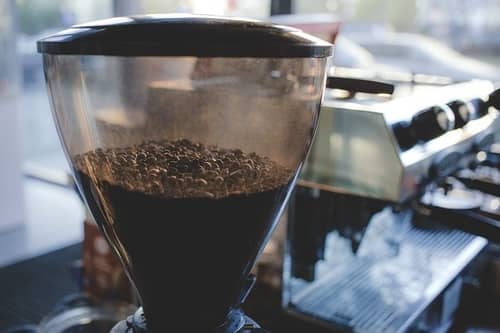


Cleaning the Hopper
All bean to cup machines have a built in grinder along with a hopper. The hopper is where you place the beans and they are then ground to the right thickness by the built in grinder.
Most hoppers can be detached from the machine and they can then be washed and rinsed dry. Likewise the grinder can also be removed and washed. Manufacturers sill give clear instructions how this should be done.
Many users find that it is useful to have a small brush to dust down the inside of the grinder and the hopper to keep it looking well and clean.
The Grouphead and Filter
This is where the portafilter is held, and a wash through or self clean will look after the cleaning of the group head. The actual portafilter can then be taken apart and placed in the dishwasher or washed and rinsed in the sink.
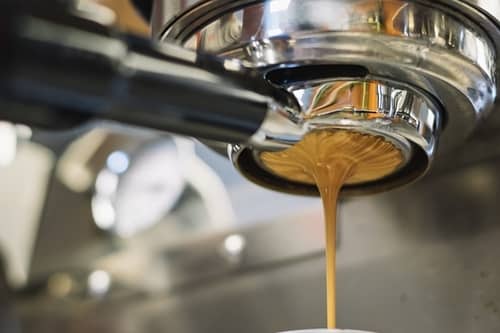


Cleaning the Grouphead
How to Clean an Espresso/Coffee Machine
Most home owners have this type of machine in their home. It has a boiler and pipes along with a grouphead and portafilter system.
The wash through method should be used to clean the pipes, boiler and grouphead.
The portafilter can be taken apart and placed in the dishwasher or washed and rinsed in the sink.
Water Filter
Some of these espresso style machines may also have a water filter to prevent limescale, and again there will be specific machine instructions for cleaning that filter system.
Limescale Cleaning or Filters
Some of these machines will also have a limescale filter or a self cleaning option. Carefully follow the manufacturer's instructions for using those or for replacing any limescale cartridges.
January 8, 2024
Great Coffee Gift Ideas for People of All Ages Welcome to our coffee gift ...
May 13, 2022
A lot of work goes into producing a cup of coffee. It is all ...
October 6, 2019
Thanks for taking your time to read our informational article on how to make ...
January 19, 2019
Have you ever tried to understand the many types of coffee that you find ...
January 18, 2019
You may or more likely may not have heard of "coffee bags." As you ...
January 16, 2019
Lavazza vs illy Coffee Brands - The Italian Coffee Brand Debate When people discuss ...

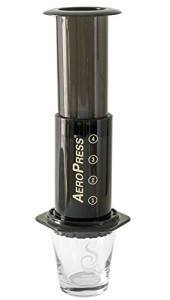

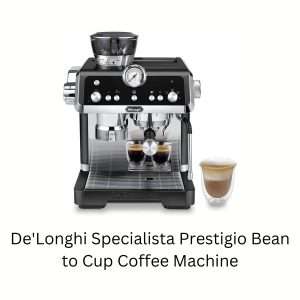
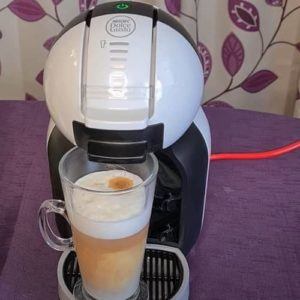
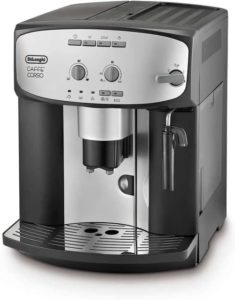
It’s the ultimate guide. Really helpful for beginners like me. Thanks for sharing.
very informative posts
Great info about the cleaning of coffee machines. Thank you for sharing this article. I would like to mention that I have also shared useful info of cleaning the coffee machines in the mentioned my site.
Thanks Nasir
Thanks, this stuff really makes it easy to clean my coffee machine. I always thought it’s a pain when this time comes.
Thanks for your step-by-step information about the coffee machine cleaning process. It helps coffee lovers who are using coffee machines at home.
Can Coffee Machine be cleaned without vinegar?
Great information about cleaning the coffee machine
I read your blog and get interesting idea to clean a coffee machine. It will very helpful blog for me. Where It get idea total process of clean a coffee machine. Thanks for sharing
1:Great innovation!
I do not have much space in my kitchenette. But I actually keep this on my table and I’ve had a superb coffee every morning since.
I really appreciate your idea. Its very important to clean our coffee maker regularly. I think, it will help the coffee lover.